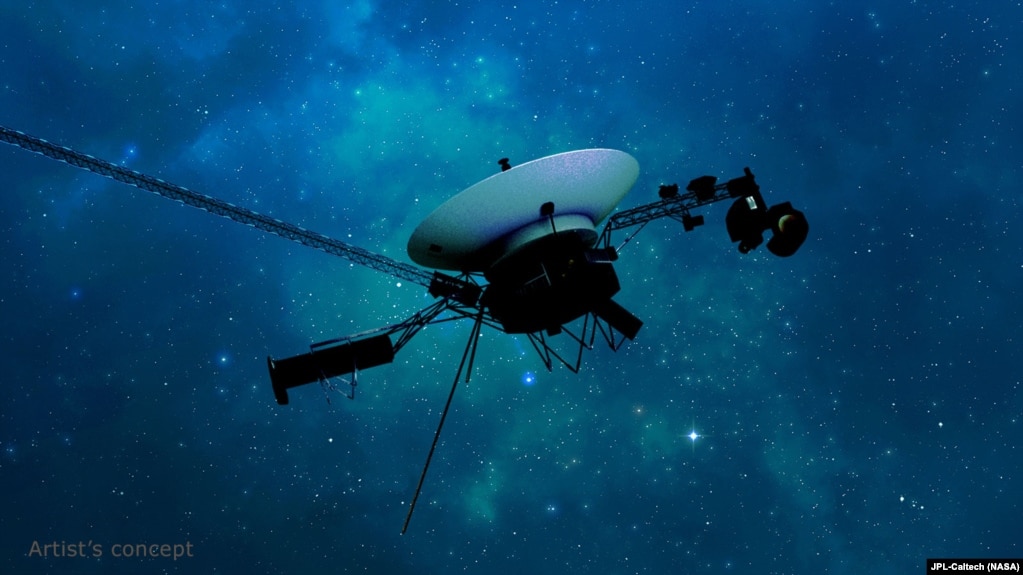AUDIO
NASA Reconnects with Voyager, Longest Serving Mission in History

NASA has once again reconnected with its Voyager spacecraft, marking a continuation of the American space agency’s longest mission in history.
The two spacecraft – Voyager 1 and Voyager 2 – launched within weeks of each other in 1977. So they have been operating for more than 47 years.
NASA officials have reported several difficulties with the spacecraft in recent years, mainly communication issues. The most recent problems involved the Voyager 1 spacecraft. NASA said in a statement in April it had remained out of touch with the spacecraft for the previous five months.
Agency officials said they later learned the problem was linked to a chip inside one of Voyager 1’s onboard computers. The issue made data being sent by the spacecraft unreadable. NASA said its engineers were able to fix that problem by making changes to how the spacecraft stores and reads data.
Then, in October, NASA reported another communication issue that resulted in a brief delay in receiving data from Voyager 1. That problem turned out to be linked to the spacecraft’s radio transmitter system.

The agency said that, for some reason, Voyager 1’s fault protection system was activated when NASA sent a command for the spacecraft to turn on one of its heaters. This activation – meant to save power – led Voyager 1 to start sending signals to a different radio transmitter system than it normally uses.
This meant NASA had to listen for the signals on the S-band instead of the usual X-band. Once they did this, they were able to start receiving data again. NASA has said the S-band is much weaker than the X-band, so engineers were seeking to get the X-band radio communication system back online for long-term use.
NASA said the agency had not used the S-band since 1981.
Voyager 1 and Voyager 2 are NASA’s most distant operating spacecraft. The agency has reported Voyager 1 is exploring space from about 24 billion kilometers from Earth, while Voyager 2 is operating from about 20.5 billion kilometers away.

Because of this great distance, NASA says its communication with the two Voyagers takes about one day to receive data, and another day to send information back from Earth.
The two Voyagers were first designed to explore Jupiter and Saturn. Both spacecraft successfully carried out studies of those planets. Later, Voyager 2 made the first-ever close observations of Uranus and Neptune in 1989.
The two spacecraft then began a new mission to explore distant areas of space. In 2013, NASA announced Voyager 1 had crossed over the border dividing our solar system from interstellar space. The term “interstellar” means “between stars.” Scientists say interstellar space begins where the sun's continuous flow of particles and its magnetic field stop.
Voyager 2 first entered interstellar space in 2018. NASA said the spacecraft was more than 17.7 billion kilometers from the sun at the time. Both Voyagers are the only spacecraft so far to explore interstellar space.
The space agency says the Voyagers are studying how the interstellar medium interacts with the solar wind. Solar wind is the continuous flow of charged particles released by the sun. The spacecraft have also provided data on the heliosphere, a kind of protective bubble around our solar system.
Suzanne Dodd is the current project manager for the Voyager mission at NASA’s Jet Propulsion Laboratory in California. She recently said in a statement the agency has no plans to retire the two Voyagers as long as they are communicating with mission members back on Earth. Dodd said the spacecraft are currently centered on observing how interstellar space and the heliosphere interact with each other.

"We wouldn't be doing Voyager if it wasn't taking science data," she added. Dodd noted one reason the Voyagers have been operating for so long is that the engineers who built them provided multiple backup systems to avoid future problems.
She said some who worked on Voyager in its earliest days have even come back from retirement to pass on knowledge to the next generation of scientists and engineers.
"From where I sit as a project manager, it's really very exciting to see young engineers be excited to work on Voyager,” Dodd said. “To take on the challenges of an old mission and to work side by side with some of the masters, the people that built the spacecraft – they want to learn from each other."
_____________________________________________
Words in This Story
chip – n. a small part of a computer that stores and helps process information
fault – n. something that goes wrong with a particular system
transmitter – n. a piece of equipment used to send and receive radio signals through the air
bubble – n. a ball of gas enclosed by another material
challenge – n. something difficult that tests one’s ability or determination
master – n. someone who has demonstrated they can do something very well
https://learningenglish.voanews.com/a/nasa-reconnects-with-voyager-longest-serving-mission-in-history/7872624.html